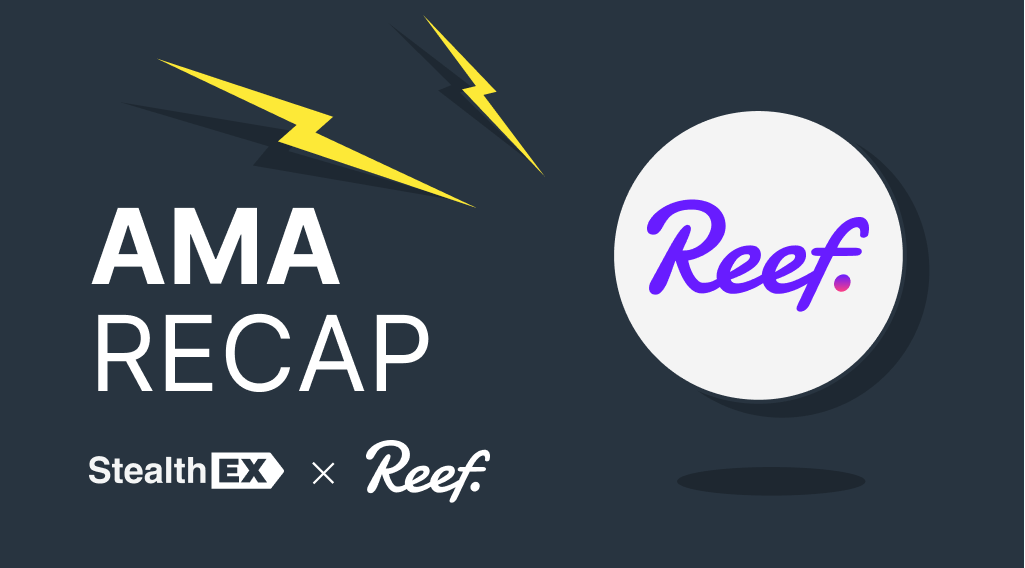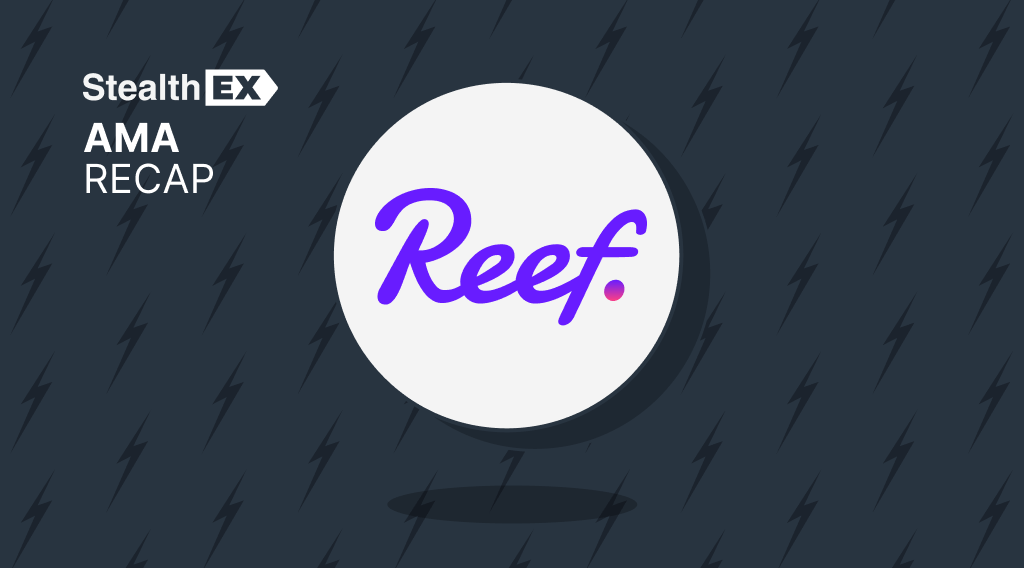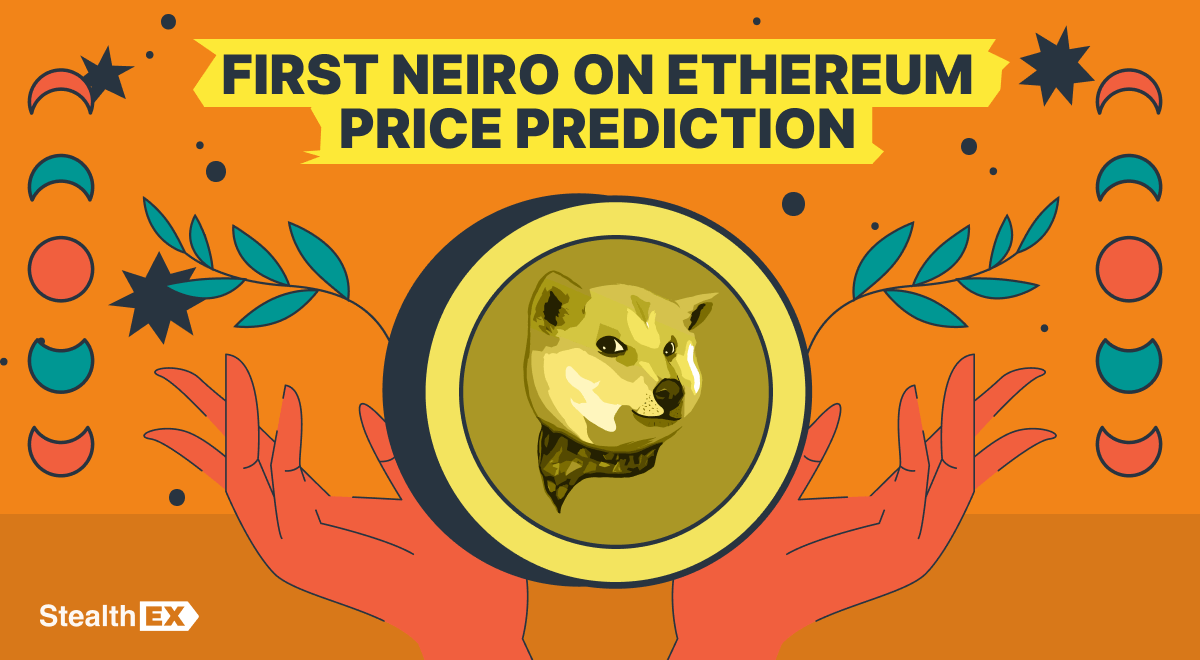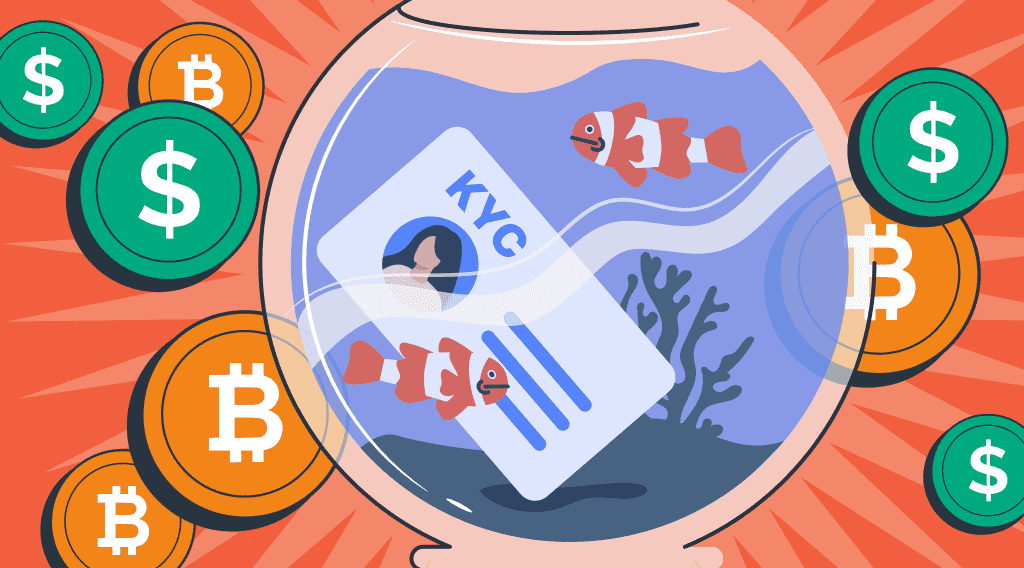Recap of Exclusive AMA: Reef x StealthEX

StealthEX recently conducted an AMA in collaboration with Reef on X Spaces, and we’re excited to share the highlights with you.

Here’s a detailed Q&A recap of the session.
- Host: StealthEX – instant cryptocurrency exchange.
- Guest: Derek Silva, the Operations Lead of Reef Chain.
Derek Silva answered a variety of questions from the community, shedding light on the project’s current state, future direction, and strategic initiatives.
StealthEX: Hi everyone! Could you please give us a brief introduction about yourself and explain how you got involved with the Reef Chain project?
Derek Silva: My name is Derek Silva, and I’ve been working in the blockchain industry full-time for over 6.5 years. Throughout my career, I’ve been involved in various projects like Bloom Protocol and Orchid, among others. I joined Reef Chain three years ago, initially focusing on community management and content creation. Over time, my role expanded, and I now serve as the Operations Lead, where my goal is to guide Reef Chain towards building a comprehensive and sustainable ecosystem.
AMA Questions from Twitter
Q1: In what ways does Reef Chain plan to implement on-chain upgradability, and how does this benefit the long-term sustainability of the network?
Derek Silva: Reef Chain already has on-chain upgradability. Our blockchain is built using upgradable binaries, which means that the core team can issue updates as needed without risking a hard or soft fork, unlike other blockchains such as Ethereum. Nodes running on Reef automatically update with the latest software, which ensures a smooth transition and avoids potential disruptions in the network.
Q2: How does Reef Chain envision its role in the broader blockchain ecosystem, particularly in relation to Ethereum and other layer one solutions?
Derek Silva: Our big differentiator is our focus on User Experience (UX). We aim to make it incredibly easy for users to interact with the blockchain, from acquiring REEF tokens on an exchange or fiat on-ramp to using Decentralized Applications (dApps) directly on Reef Chain. Our mobile app, for example, is designed to be user-friendly, with features like built-in fiat on-ramp options and seamless dApp integration. This simplicity, combined with our fast and scalable layer one blockchain, positions us uniquely in the ecosystem.
Q3: Can all Ethereum-based DeFi applications be seamlessly ported to Reef Chain without code modifications? Are there any potential limitations to consider?
Derek Silva: At the smart contract level, Ethereum-based DeFi applications can be ported to Reef Chain with minimal modifications. However, the main changes would be on the front end, particularly in connecting your app to the Reef RPC. Our Ethereum-compatible RPC might require some adaptation, but this process typically takes about a week. Once ported, we assist in marketing and stress testing the application on Reef Chain.
Q4: Can you elaborate on the role of the REEF token in the Reef Chain ecosystem, specifically in terms of staking and governance? How does it contribute to the integrity and functionality of the network?
Derek Silva: The REEF token is crucial in our ecosystem. It’s used to pay for gas fees, and all gas fees are burnt, which contributes to the deflationary nature of the token. Additionally, the REEF token is used in staking, where validators and nominators stake Reef to secure the network. While community governance isn’t fully implemented yet, it’s something we’re working towards, and the REEF token will play a significant role in governance decisions when the time comes.
Q5: What are the next steps for Reef Chain Wallet and Reef Swap in terms of future developments and upgrades? Can you outline any planned features or improvements that are expected to enhance the functionality and user experience of these products?
Derek Silva: We’re continuously enhancing both the Reef Chain Wallet and Reef Swap. One exciting update is the integration of StealthEX directly into the mobile app, allowing users to perform crypto-to-crypto swaps within the app. We’re also working on improving the user interface of Reef Swap, adding features like sorting options for pools, and fixing some community-reported bugs. Our goal is to ensure these tools are as intuitive and user-friendly as possible.
Q6: Why did you decide to build Reef Chain as a layer one blockchain instead of a layer two that would scale on Ethereum, which would have been easier to onboard developers and more users?
Derek Silva: When we started three years ago, layer two solutions weren’t as prominent as they are today. There were challenges with getting layer twos listed on exchanges and connected to fiat on-ramps. Building Reef as a layer one blockchain provided us with greater scalability and flexibility from the start. This approach has allowed us to focus on creating a robust, scalable ecosystem that doesn’t rely on Ethereum’s infrastructure.
Q7: I see that Reef Chain is built on Substrate. Can you elaborate on the specific advantages this brings compared to other blockchain frameworks? How does that impact Reef Chain’s upgradability and potential for future development?
Derek Silva: Substrate offers significant advantages, including scalability and flexibility. By building on Substrate, we can run multiple virtual machines on Reef Chain, not just the Ethereum Virtual Machine (EVM). This means we could potentially support other types of smart contracts, like those written in Rust, in the future. Substrate also facilitates on-chain upgradability, allowing us to roll out updates seamlessly without disrupting the network, which is a significant advantage over other blockchain frameworks.
Q8: What are the plans for expanding the availability of Reef Chain Wallet to other platforms, such as iOS? How does the development timeline for those releases align with the goals of Reef Chain? Can you discuss any potential challenges or considerations in this rollout?
Derek Silva: We submitted the iOS version of the Reef Chain Wallet at the same time as the Android version, but the approval process with Apple has been challenging. Apple’s review process is largely manual and very stringent, especially for cryptocurrency-related apps. We’ve been addressing their feedback, but it’s a slow back-and-forth process. Unfortunately, this means we can’t provide a specific timeline for the iOS release, but we’re confident it will be available as soon as we clear these hurdles.
Q9: How does Reef plan to engage and grow its community in the long term? Could you discuss any specific initiatives or programs that encourage community participation in governance, development, and ecosystem growth?
Derek Silva: We’re actively working on initiatives to grow and engage our community. Currently, we’re running the 1,000 Nominators Challenge, which encourages users to stake their REEF tokens and secure the network. We also have a user-generated content campaign for Reef Swap. Moving forward, we’re looking to introduce more programs to incentivize developers and users, including potential grant programs, to ensure that Reef Chain remains a vibrant and active ecosystem.
Live Questions
Q1: Do we lose our staking rewards and earnings when we unstake REEF tokens before the staking period expires? Also, is there a way to boost our earnings to more than the percentage APY?
Derek Silva: If you unstake your REEF tokens before the staking period expires, you do not lose your earned rewards; however, you will enter a 28-day unbonding period where the tokens are locked and not earning rewards. To boost your earnings, you can choose to restake your earned rewards, which compounds your stake and increases your APY over time.
Q2: What role does your token play in your ecosystem, and what are the benefits of long-term holding of your token?
Derek Silva: The REEF token plays a central role in our ecosystem. It is used to pay for gas fees, which are entirely burnt, contributing to the deflationary model. The token is also critical for staking, where it helps secure the network and provides staking rewards to holders. Long-term holding benefits include earning more Reef through staking and potentially participating in future governance as we develop community-driven decision-making processes.
Q3: How does Reef incentivize developers and users to adopt its platform?
Derek Silva: While we haven’t focused as much on developer incentives in the past, we are working on improving this. We’re exploring grant programs and other incentives to attract developers. For users, we have initiatives like the 1,000 Nominators Challenge, where participants can earn rewards by staking their tokens. We’re committed to expanding these programs and growing our ecosystem by making it more attractive for both developers and users.
StealthEX: Thank you all for joining today!

You can swap Reef (REEF) crypto on StealthEX exchange platform.
How to Buy REEF Coin?
Just go to StealthEX and follow these easy steps:
- Choose the pair and the amount for your exchange. For example, ETH to REEF coin.
- Press the “Start exchange” button.
- Provide the recipient address to which the coins will be transferred.
- Move your cryptocurrency for the exchange.
- Receive your coins!

Follow us on Medium, Twitter, Telegram, YouTube, and Publish0x to stay updated about the latest news on StealthEX.io and the rest of the crypto world.
AMA crypto news crypto world Reef Reef FinanceRecent Articles on Cryptocurrency
 First Neiro on Ethereum Price Prediction: Can NEIRO Crypto Hit $10?
First Neiro on Ethereum Price Prediction: Can NEIRO Crypto Hit $10?  No KYC for Buying Cryptocurrency on StealthEX
No KYC for Buying Cryptocurrency on StealthEX 